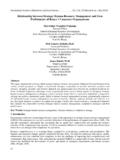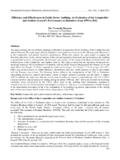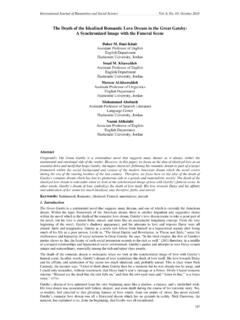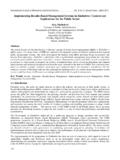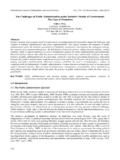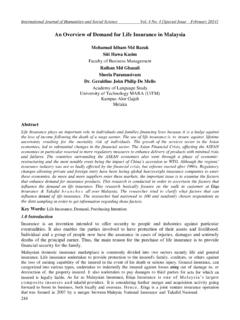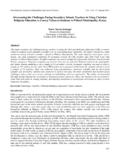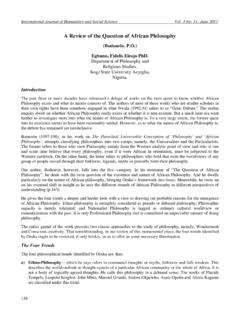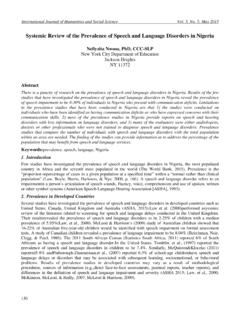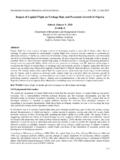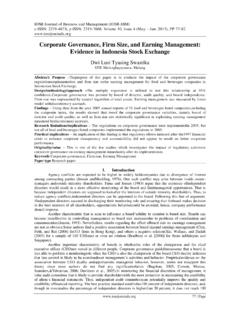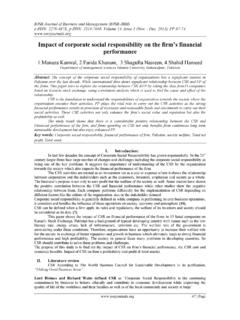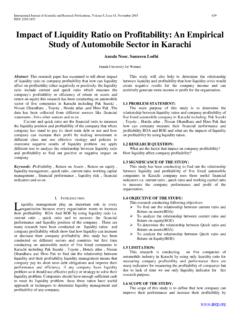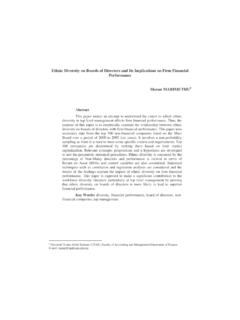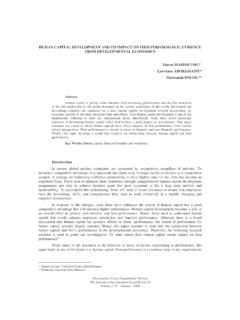Transcription of The Relationship between the ROA, ROE and ROI ...
1 International Journal of Humanities and Social Science Vol. 2 No. 11; June 2012. The Relationship between the ROA, ROE and ROI Ratios with Jordanian Insurance Public Companies Market Share Prices Dr. Majed Abdel Majid Kabajeh Assistant Professor Accounting Department Applied Science University Amman-Jordan Dr. Said Mukhled Ahmed AL Nu'aimat Assistant Professor Accounting Department AL Balqa' Applied University Amman-Jordan Dr. Firas Naim Dahmash Assistant Professor Accounting Department Applied Science University Amman-Jordan Abstract The purpose of this study is to examine the Relationship between the ROA, ROE and ROI ratios together and separately with Jordanian insurance public companies share prices during the period (2002-2007). Based on the empirical evidence, the results showed a positive Relationship between the ROA, ROE and ROI ratios together with Jordanian insurance public companies share prices.
2 The results also showed a positive but low Relationship between each of ROA ratio separately and ROI ratio separately with Jordanian insurance public companies share prices. However, the results showed no Relationship between the ROE ratio separately with Jordanian insurance public companies market share prices. Keywords: Profitability ratios, activity ratio analysis, insurance companies, Jordan. 1. Introduction It is known that financial ratios are the oldest simple and practical financial and planning analysis tool. They appeared in the mid of the nineteenth century, and it were always used by accountants and financial analysts. Financial ratios were used by internal and external financial data users for making their economic decisions;. including investing, and performance evaluation decisions. Many financial and accounting models were developed during past decades.
3 However, the financial ratios still kept its classical and fundamental power either as part of these financial and accounting models or as another important supportive analysis with it. Because of the proven power of the ratio analysis in the practical financial and planning analysis, this study will explore the effect and power for some key ratios (ROA, ROE and ROI) together and separately in explaining the share prices during the period between 2002 and 2007 for one of the most important sectors in Jordan, which is, the insurance sector, the sector which produces the highest income comparing to all other sectors in Jordan, in addition to the shortage of studies for this important sector in this area. 2. Profitability and activity ratios a background: The financial ratio can be defined as a Relationship between a two individual quantitative financial information connected with each other in some logical manner, and this connection, is considered as a meaningful financial indicator which can be used by the different financial information users.
4 115. Centre for Promoting Ideas, USA Any financial ratio/s might be useful and meaningful if we compare it with other related meaningful information, either a present or past similar indicator/s for the same firm or similar firms in the same industry. Although financial ratios are considered useful and practical in financial analysis, these financial ratios should be interpreted and analyzed in a rational manner with caution taken into consideration the limitations of these financial ratios in order to get the expected meaningful result from it. There are many financial ratios used by accountants and financial analysts, and most of these financial ratios can be classified as follows according to there use in financial analysis: 1-Liquidity Ratios 2-Activity (operational) Ratios 3-Profitability Ratios 4-Debt Ratios 5-Market Ratio Profitability ratios are an indicator for the firm's overall efficiency.
5 It's usually used as a measure for earnings generated by the company during a period of time based on its level of sales, assets, capital employed, net worth and earnings per share. Profitability ratios measures earning capacity of the firm, and it is considered as an indicator for its growth, success and control. Creditors for example, are also interested in profitability ratios since they indicate the company's capability to meet interest obligations. Shareholders also are interested in profitability. It will indicate the progress and the rate of return on their investments. The ratios of the return on assets (ROA) and the return on owner's equity (ROE) are the most used profitability ratios in the analysis. 1- Return on assets (ROA) ratio: Net profit after taxes/Total assets. This ratio is calculated as net profit after tax divided by the total assets.
6 This ratio measure for the operating efficiency for the company based on the firm's generated profits from its total assets. 2- Return on owner's equity (ROE) ratio: Net profit after taxes/Total shareholders equity. This ratio is calculated as net profit after tax divided by the total shareholders equity. This ratio measures the shareholders rate of return on their investment in the company. Activity ratios are another group of ratios; it's usually used to measure the ability to optimize the use of the available resources. These ratios are other measures of operational efficiency and performance. Among this group of ratios is the turnover to capital employed or return on investment (ROI) ratio. 3- Return on investment (ROI) ratio: Net profit after taxes/Total paid in capital. This ratio is calculated as net profit after tax divided by the total paid in capital.
7 It measures the firm's efficiency in utilizing invested capital. In other words this ratio expresses company's ability to generate the required return (expected return) based in using and managing the invested resources by the shareholders (AL Matarneh, 2009). 3. Literature review (Abu Shanab, 2008) examined the impact of returns and risks on the share prices for a sample of 38 industrial public companies in Jordan listed on Amman Security Exchange for the period of 2000 to 2007. The results of the study showed that there is no effect for the returns, risks and dividends on the market value per share. However, the results indicated that there is a significant Relationship between cash flow and share prices. (AL Kurdi, 2005). study explored the ability of the published accounting Information to predict share prices for a representative sample of 110 Jordanian public companies listed in Amman Security Exchange for the period of 1994 to 2004.
8 The results informed that there is a Relationship between the published accounting Information of the insurance public companies and their share. The results also informed that market information have more ability on predicting share prices compared to the accounting information. Another study for (AL Qudah, 2004) tested the role of accounting exposure in indicating the real market price. The sample was consisted of (35) public companies listed in Amman's Stock Exchange, and (23) licensed financial traders, and (27) investors at Amman's Security Exchange. 116. International Journal of Humanities and Social Science Vol. 2 No. 11; June 2012. The results informed that the revealed financial data of the public firms are sufficient and appropriate in showing the real share values. The results also informed that all the study sample categories depend on different mechanisms in their investing decisions through collecting financial and economic information.
9 (Abu Hasheesh, 2003) examined the role of published accounting Information in predicting share prices. The study used a sample of 40 Jordanian public companies listed in Amman Security Exchange for the year 2003. The results showed that there is a positive significant positive Relationship between the market price per share with the ratios of net profits to equity, net profits to total assets, and dividends to net profits as a total. The results showed also a significant negative Relationship between the market price per share, with the ratios of fixed assets to total assets, the creditors total to total of cash sources, and the wages ratio to total of expenses ratio. Another study for (AL Thaher, 2003) examined the impact of dividend policy on market share prices. The study was applied on a sample of (7) Jordanian commercial banks listed in Amman Security Exchange during the period between the year of 1996 to 2000.
10 The results showed a significant positive Relationship between the market price per share with dividends and this result varies between the tested banks. (AL Khalayleh, 2001) tested the Relationship between accounting performance indicators and market performance indicators for a sample of (40) Jordanian public companies listed in Amman Security Exchange during the period between the year of 1984 to 1996. The results showed a significant positive Relationship between the market price per share with the ratios of return on assets and return on equity. 4. Methodology Hypotheses Based on the previous literature review, it's noted that some of the previous studies found some Relationship between the market price per share with some financial ratios, especially (AL Khalayleh, 2001) study which informed a significant positive Relationship between the market price per share with the ratios of return on assets and return on equity for a sample of Jordanian public companies listed on Amman Security Exchange.
